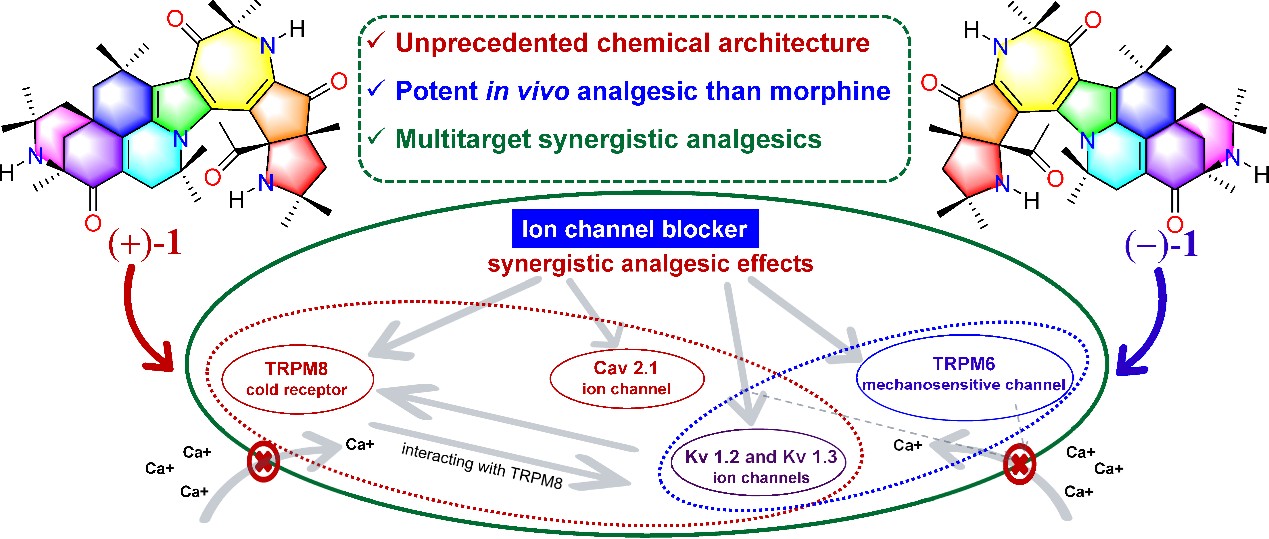
The roots of Anacyclus pyrethrum are used in Traditional Chinese Medicine, particularly in the Xinjiang Uygur Autonomous Region, to treat headaches, migraines, and cold-type toothaches. Neuropathic and cancer-related pain present significant clinical challenges due to their adverse effects on mental health, immunity, and overall survival. Studies have focused on developing multi-target analgesics that have minimal side effects and high efficacy in addressing the global pain crisis.
A research team led by Prof. Haji Akber Aisa at the Xinjiang Technical Institute of Physics and Chemistry of the Chinese Academy of Sciences (CAS), and their collaborators have isolated five pairs of potent analgesic alkaloid enantiomers from the roots of A. pyrethrum using molecular network technology. This research was published in Acta Pharmaceutica Sinica B.
In this study, the researchers successfully isolated five pairs of potent analgesic alkaloid enantiomers, whose structures were determined using comprehensive spectroscopic data analysis, quantum 13C NMR, DP4+, and ECD calculations, as well as single-crystal X-ray diffraction analysis.
Anacyphrethines A (1) and B (2) are highly conjugated and polymethylated 6/6/6/6/5/7/5/5-fused octacyclic tetraazabic alkaloids featuring an unprecedented 8,14,18,24-tetraaza-octacyclo [16.8.2.11,23.04,28.05,17.09,16.011,15.021,27] nonacosane motif. The proposed biosynthetic pathways involve key aldol, hydroamination, and Schiff base reactions. All compounds demonstrated potent analgesic effects in vivo.
Further tests on 44 analgesic-related targets revealed that (+)-1 exhibited significant inhibitory effects against various ion channels, such as TRPM8, Kv1.2, Kv1.3, and Cav2.1, with IC50 values of 1.10 ± 0.26, 4.20 ± 0.07, 2.20 ± 0.24, and 10.40 ± 0.69 μM, respectively. Meanwhile, (−)-1 primarily inhibited TRPC6, Kv1.2, and Kv1.3 ion channels with IC50 values of 0.81 ± 0.05, 0.91 ± 0.04, and 1.50 ± 0.13 μM, respectively, without affecting opioid receptors. This indicates their potential as non-addictive analgesics.
This work was supported by the National Key R&D Program of China, the Biological Resources Program, CAS, and other funding sources.

Anacyphrethines A (1) has been demonstrated to exert analgesic effects by targeting multiple non-opioid ion channels. (Image by Prof. Haji Akber AISA's group)

86-10-68597521 (day)
86-10-68597289 (night)

52 Sanlihe Rd., Xicheng District,
Beijing, China (100864)

